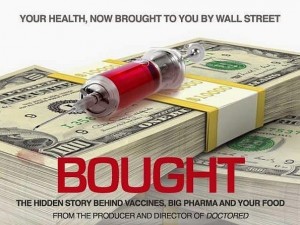Alanna Ketler – Currently, there are only 2 countries that allow direct-to-consumer advertising on prescription medication — the U.S.A and New Zealand. Other countries have strict bans on this type of advertising, for several reasons. When you think about it, should you really be able to ask your doctor for a specific prescription armed with only the information you obtained through an advertisement aimed at getting you to buy the drug? That should be their job — to prescribe to you a drug if they think it is appropriate to treat your specific condition. Worse still, the likelihood that doctors are making commissions, or receiving some other kind of incentive, for prescription drug sales is becoming increasingly apparent, which makes it is even more exciting that the American Medical Association has stepped up to request a ban on these advertisements.
The main reason that the American Medical Association (AMA) is calling for this ban is because having these advertisements encourages a higher demand for even more expensive treatments, despite the clinical effectiveness of less costly alternatives.
“Today’s vote in support of an advertising ban reflects concerns among physicians about the negative impact of commercially-driven promotions, and the role that marketing costs play in fuelling escalating drug prices,” said AMA Board Chair-elect Patrice A. Harris, M.D., M.A. “Direct-to-consumer advertising also inflates demand for new and more expensive drugs, even when these drugs may not be appropriate.”
It is important to note that in 2014 alone, Americans spent over $370 Billion on prescription drugs. One has to wonder if this number would have been even close to that high had there not been advertisements for these drugs. How many people out there see an ad for a drug that can relate to their problem and assume that they need to have the drug? Nearly 70 percent of all Americans are on at least one prescription medication and the amount of deaths caused by prescription drugs has sky rocketed over the past decade. Many prescription drugs are also highly addictive; to many people, advertising these substances is the equivalent to advertising cocaine or heroin. Continue reading

 Carolanne Wright – If you believe pharmaceutical corporations hold the health of the general public in high regard, it’s time to reconsider. The industry is filled with examples of wrongful death, extortion, fraud, corruption, obstruction of justice, embezzlement, fake journals, harassment and hit lists that would make even the most hardened Mafia godfather blush. Big Pharma has been fined billions by the U.S. Department of Justice, but these enormous fines don’t curb the corruption, it’s just looked upon as “the cost of doing business,” similar to paying the utilities.
Carolanne Wright – If you believe pharmaceutical corporations hold the health of the general public in high regard, it’s time to reconsider. The industry is filled with examples of wrongful death, extortion, fraud, corruption, obstruction of justice, embezzlement, fake journals, harassment and hit lists that would make even the most hardened Mafia godfather blush. Big Pharma has been fined billions by the U.S. Department of Justice, but these enormous fines don’t curb the corruption, it’s just looked upon as “the cost of doing business,” similar to paying the utilities.